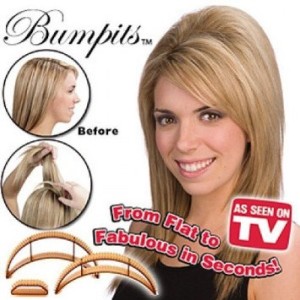After analyzing the format of the Howard Beale Show in Network, I came to the conclusion that the various segments relate to the basic framework of a typical advertisement. This theory does seem valid, because just like advertisements, the Howard Beale Show was designed to appeal to the masses. Below, I have outlined how each segment mirrors the components of a conventional advertisement.
“Sybil: The Soothsayer” and the Promise of a Better Reality
The “Sybil: The Soothsayer” segment on the Howard Beale Show is meant to portray the notion that society yearns for a glimpse into the future, perhaps to eliminate the anxiety of uncertainty and to keep aspirations alive for an idealized reality that lies ahead. Advertisement are similar in convincing the consumer that a certain product or service has the ability to provide this aspirational state. Advertisements are meant to highlight a need, whether existing or fabricated, and how a specific product or service can fulfill that need. Similar to “Sybil: The Soothsayer,” advertisements provide a sense of comfort that a current dissatisfaction will be overcome, and an idealized reality lies ahead. A more obvious example of this type of marketing can be seen in weight loss ads, which ensure that your “idealized state” can be achieved in the very near future.
“Skeletons in the Closet” and the Life of the Elite
“Skeletons in the Closet” was meant to represent audience members’ desires to escape the detriments of their current lives by listening to the misfortunes of others, namely celebrities. Modern advertisements with celebrity endorsers somewhat portray this concept. Aside from providing more credibility behind advertisements, utilizing celebrity endorses shows the audience that celebrities have mutual misfortunes and needs, whether it be a remedy for acne, weight loss, etc. When people view these testimonials, recognize the struggles of public figures, and associate the success of celebrities with the product/service solving these setbacks, they are enticed to make a purchase in the hopes of escaping their struggles and experiencing the reality of celebrities’ lives.
“Vox Populi” and Conforming to the Majority
The “Vox Populi,” or popular opinion segment of the Howard Beale Show represents peoples’ desire to not only listen to perspectives that resemble their own, but also the yearning to remain in synch with a larger community. This strategy is very similar to the methods many advertisers employ. Ads are obviously designed in a way that appeal to the needs and beliefs of the majority of a specific target audience, but also underscore the necessity of a specific product or service in fitting in among society. For example, the commercial for Bumpits (a plastic piece inserted into the hair to give the illusion of more volume) emphasizes the belief that all women allegedly desire and look better with more voluminous hair. Whether this notion is true or not, the commercial is meant to persuade women to believe that in order to fit in and obtain approval from others in society, they must purchase this product. Both the “Vox Populi” and commercials for products similar to Bumpit manipulate individuals to conform their individual desires and needs to what is portrayed as popular opinion.
“It’s the Emmes Truth Department” and Deceitfulness
The “Emmes Truth Department” most likely depicts news stories in a fictional light in order to appeal to audiences. Such practices allows the audience members to hear only what they would like to hear and protects them from any type of news that would upset them. This deceitful nature is very present in the advertising industry as well. The benefits and quality of many products and services are often fabricated and exaggerated. Commercials and advertisements are designed to reflect what people would want to hear (e.g. “Loose weight easily and fast,” “xyz product is the #1 choice as voted by doctors,” etc.). By solely conveying what consumers want to hear, consumers are at risk of potentially wasting their time and money buying sub-par products, and even putting themselves in danger if the side effects of certain products are unclear. These ramifications are similar to sugar-coating news stories — the audience remains uneducated and potentially vulnerable to the harsh realities of the world.
“Mad Prophet of the Airways” and Masking Individual Thinking
Howard Beale provided an outlet for audience members to express their anger, but he also essentially dictated what the audience should believe in. The audience enjoys his segment because they can outwardly express emotions, but these emotions do not involve any type of personal thinking or formation of unique perspectives. Similarly, advertisements are created to influence consumers’ opinions on a product or service. The ultimate goal of advertising is to induce sales by showing a product/service in a positive light and ensuring it is easy for the consumers to choose a specific product/service over those of competitors. Because advertisements dictate how consumers should view a product and aim to trump any existing perceptions, they are very similar to the underlying goal of Howard Beale’s segment.
Although some of my explanations may have been a bit of a stretch, I do think the Howard Beale Show adequately reflects consumers’ dangerous relationship with advertising.





That picture of the restaurant food vs. the advertisement version was so disturbing. I remember as a kid losing my shit over fast-food cause I probably imagined I was eating what I saw in commercials… I appreciated your perspective in this article!